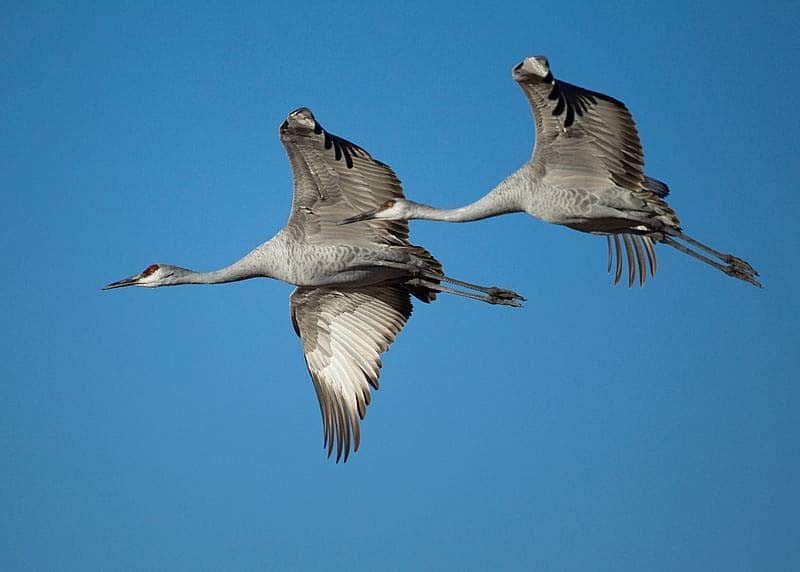Spring comes reluctantly to the North. Pools of frigid water will cover with ice at night. The landscape is still brown and leafless and the wind often confirms that winter is still close at hand. Then the first trickle of birds will begin to arrive and for the watchful, spring begins its renewal.
For many of us in the Interior, the sandhill crane re-enacts this drama most poignantly. Thousands of these steel gray birds with red crowns and 6-foot wingspans will pour into the north and disperse across their Arctic breeding grounds in Alaska, northern Canada and even eastern Siberia. They have endured an arduous odyssey coming from their wintering grounds in Texas or northern New Mexico, many of them having stopped over along the Platte River Valley in Nebraska in early March. Large, long-legged and long-necked, cranes are among the tallest birds in the world. Their family bonds are long also; they rarely swap mates and both parents help with the incubation and raising of the young. During the spring breeding season, ritualized courtship displays will include loud rattling calls, elaborate dances and threat postures. The dances include exaggerated head bobbing, bowing, leaping, grass tosssing and running with wings extended. These beautiful duets most often happen at dawn and dusk. While dancing is most prevalent in the spring, cranes will dance at all times of the year, possibly to expel pent-up energy. Juveniles and unmated sandhills will dance and even chicks as young as 2 days old have been observed dancing.
Sandhills have a low reproductive potential due to several factors. Sandhills don’t reach sexual maturity until 2 or 3 years of age and if they are disturbed while nesting they are less likely than many bird species to renest. But they are long-lived birds and if they survive their first two years, they may live up to 15 years in the wild.
Three basic nesting habitats are required for sandhills: large areas of water, isolation from human activity and dry uplands nearby with a food supply. They also seek out desolate, flat, open areas to place their nests so they can spot predators at a distance. The chicks, (called colts) can walk within a day of being born and are able to swim vigorously within two or three days. The window of opportunity for Arctic nesting birds is small. In only eight weeks the chick must reach a weight of 6 pounds with the strength to fly 4,000 miles as winter approaches.

It isn’t cold weather but food that sends the cranes flying south again. Sandhills are omnivores, meaning they eat both animal and vegetable foods. Their bills are powerful and they use them like a garden tool to dig and probe for insects and worms. As cold weather returns, insect life shuts down and other food sources become scarce. The sandhills begin moving south and east. Cranes that pass over the Alaska Range might fly as high as 20,000 feet, usually led by an older crane spiraling up into the clouds to attain such heights.
Cranes concentrate at migratory staging areas and on their wintering grounds and are particularly vulnerable to loss of habitat along migration routes and wintering areas. Habitat conservation in specific areas, such as the central Platte River Valley in Nebraska, is essential for the long-term viablility of sandhill crane populations from Alaska.
We hear cranes as much as we see them. Their trumpeting, rattling “gar-oo-oo” is audible for more than a mile, a resonant, primeval voice that alludes to something beyond our ordinary existence and lingers in our memory.



